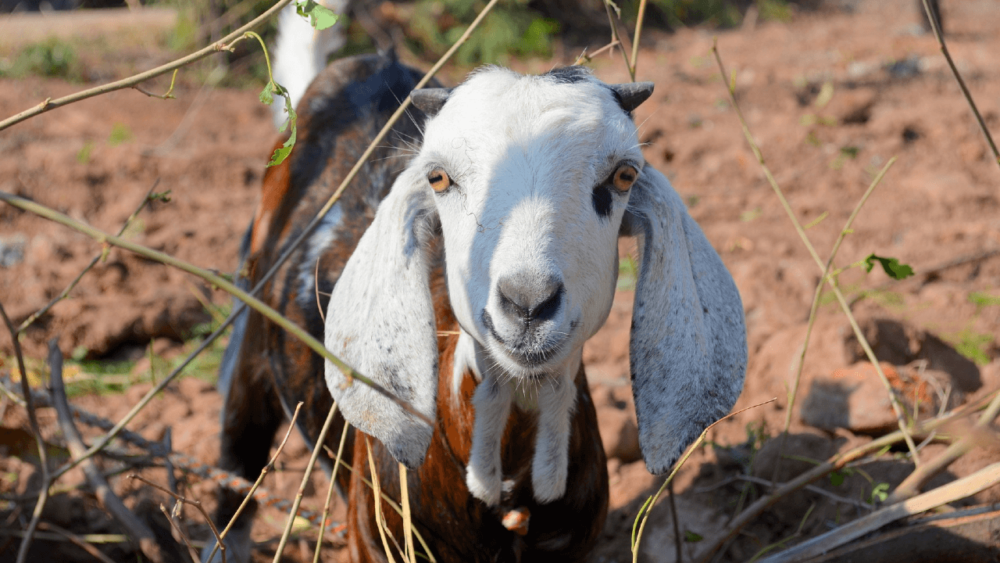
Goats are playful, curious, and…noisy. They have a wide range of bleats, and each goat has a distinctive, unique voice.
In a quiet, peaceful neighborhood, a loud goat can upset neighbors. Most goats are not super quiet. But, is there a way to own goats and strike a balance?
What are the quietest goat breeds? Several goat breeds are known for being extremely quiet. The quietest goat breeds include the Oberhasli, Angora, Myotonic, and Saanen. But these aren’t the only quiet breeds we’ll cover in this article.
Although you can opt for quiet breeds, you should still pay attention to the sounds your goats make! Vocalizations can indicate that your goats are in pain, hungry, thirsty, ill, lonely, or bored. Check your herd regularly and ensure their needs are being met. Nubian, Nigerian Dwarf, and Pygmy goats are often the loudest goat breeds, so avoid these breeds if your goal is peace and quiet.
Those ten breeds are all remarkable in their own right. Let’s explore them further, and then cover why your goats might be so noisy and how to reduce noise levels!
1. Oberhasli: Beautiful, Versatile, and Productive Goats
Oberhasli goats are the quietest breed of goats! This breed rarely makes a noise, and their voices are generally soft. Oberhasli goats are the best breed to consider if you need a quiet goat. Even the bucks are usually quiet.
Oberhasli goats are most commonly raised for milk, but they’re also used for meat, packing, or showing. They’re fantastic for small farms. This is an excellent breed if you’re looking for quiet, easygoing, and multi-purposed goats.
- Excellent for children
- Ideal for breeding
- Typically polled (naturally hornless)
If you want a quiet and small goat breed, you should definitely consider the Miniature Oberhasli.
Oberhasli Breed Characteristics
| Origin: | Switzerland |
| Conservation: | At risk, recovering |
| Size: | Medium |
| Height: | 28-34 inches |
| Weight: | 100-150lbs |
| Care: | Low |
| Lifespan: | 12 years |
| Primary Purpose: | Dairy, packing, showing, pets |
| Temperament: | Friendly, quiet, alert, and adventurous |
| Cost: | $300-$1,000 |

3. Angora: Fiber Powerhouses
If you want a goat that’s both quiet and provides valuable fiber, look no further than the Angora. Angora goats are mohair powerhouses with a widespread reputation for being quiet, calm, and docile. Additionally, many of them are amazing with children.
Angora goats do require more care than other breeds, but they’re well worth it. They yield an average of 5-10 lbs of mohair, and they’re sheared twice a year. This equals out to 10-20 lbs of mohair annually that you can sell or use!
- Profitable
- Great personalities
- Produces Mohair fiber (very coveted)
Angora Breed Characteristics
| Origin: | Ankara, Turkey |
| Conservation Status: | Not at risk |
| Size: | Medium to large |
| Height: | 36-48 at the withers |
| Weight: | 70-225lbs |
| Care: | High |
| Lifespan: | 10 years |
| Primary Purpose: | Mohair production |
| Temperament: | Sweet, mild, gentle, and quiet |
| Cost: | $300-$650 |
4. Myotonic Goats: Quiet and Fun “Fainting Goats”
Myotonic goats (or Tennessee Fainting goats, as they’re more commonly known) are exceptionally quiet. They only bleat when they have a reason to, which is the most ideal in a goat – you want to know when there’s a problem.
Myotonic goats are very friendly and make great pets – even for kids! They famously have a peculiar recessive genetic condition called myotonia congenita. This means that while they don’t lose consciousness, their muscles stiffen and contract, which may cause them to fall over.
This fainting breed’s origins are a bit murkier than others. The first four recorded Myotonic goats came from Nova Scotia in the 19th century, but they were ultimately bred in Tennessee, US.
- Great for meat
- Ideal for children
- Fun to be around!
Myotonic Breed Characteristics
| Origin: | US (Tennessee) |
| Conservation Status: | Threatened – recovering |
| Size: | Small-medium |
| Height: | 17 inches |
| Weight: | 50-165lbs |
| Care: | Low |
| Lifespan: | 10-18 years |
| Primary Purpose: | Meat |
| Temperament: | Friendly, charismatic, playful, quiet |
| Cost: | $100-$600 |
5. Saanen: Quiet and Intelligent
Saanen goats have soft voices and they’re usually not at all talkative. You likely won’t notice a Saanen around, and neither will your neighbors! Despite their larger size, Saanen goats are excellent on small homesteads for this reason. However, Saanen bucks tend to be quite loud.
I find that Saanen goats are often super calm and collected, unlike a lot of other energetic and bouncy breeds. This breed might be perfect for you if you want quiet, gentle, calm, and productive goats – especially around kids.
- Calm and quiet
- Extremely productive milkers
- Profit potential
Saanen Breed Characteristics
| Origin: | Switzerland |
| Conservation Status: | Least concern |
| Size: | Medium-large |
| Height: | 31-35 inches |
| Weight: | 145 lbs |
| Care: | Low |
| Lifespan: | 10 years |
| Purpose: | Dairy |
| Temperament: | Friendly, docile, intelligent, calm |
| Cost: | $100-$700+ |

6. American LaMancha: Gentle and Calm
LaMancha goats are super calm, laid-back, and quiet. These goats won’t disturb you or your neighbors. LaManchas are perfect if you enjoy quiet time and you want an excellent dairy goat.
This breed is also one of the best goats for children. LaManchas are easy to handle and can produce a gallon of high-quality milk every day. They have great, sweet personalities, and you’ll have a blast with this breed.
- Perfect for dairy farms
- Great for children
- High percentage of butterfat in the milk
LaMancha Breed Characteristics
| Origin: | USA |
| Conservation Status: | Unlisted |
| Size: | Medium-large |
| Height: | 28-30 inches |
| Weight: | 130-165 |
| Care: | Low |
| Lifespan: | 7-10 years |
| Purpose: | Dairy |
| Temperament: | Calm, even-tempered, sweet, great with kids |
| Cost: | $400-$600 |
6. Golden Guernsey: Beautiful Dairy Goats
Golden Guernsey goats are typically very quiet, unlike most other goats. They’re also productive milkers, friendly, and typically polled, all excellent traits for 4-H goats.
This breed is very hardy and adaptable, although they haven’t quite developed immunity to diseases in North America. Unfortunately, Golden Guernsey goats are still relatively rare, although they deserve more popularity.
Why raise Golden Guernsey goats?
- Long lifespan
- Great for milk
- Easy to keep
Golden Guernsey Breed Characteristics
| Origin: | Isle of Guernsey, Britain |
| Conservation Status: | Endangered, minority |
| Size: | Medium |
| Height: | 26-28 inches |
| Weight: | 120-150 lbs |
| Care: | Low-Medium |
| Lifespan: | 15 years |
| Purpose: | Dairy |
| Temperament: | Docile, affectionate, may take time to gain trust |
| Cost: | $400-$500 |
7. Toggenburg: Lively and Stubborn
Toggenburg goats often have gentle, soft voices. Most Toggenburg owners remark about how silent their goats are! This is advantageous for numerous reasons, from keeping goats in a busy neighborhood to even predator protection.
These are also stubborn, lively, and bold goats, although many have friendly dispositions. It takes time and handling for them to become more sociable. Toggenburgs are excellent for milk and meat production.
Toggenburg goats may not be suitable for young children, so use common sense and caution with this breed.
- Multi-purposed (Milk and Meat)
- Profitable
- Stringent milk makes great cheese flavors

Toggenburg Breed Characteristics
| Origin: | Switzerland |
| Conservation Status: | Not at risk |
| Size: | Medium-large |
| Height: | 28-38 inches |
| Weight: | 125-200 lbs |
| Care: | Low-medium |
| Lifespan: | 8-12 years |
| Purpose: | Dairy and meat |
| Temperament: | Engaging, friendly, bold, lively, stubborn, active, vigilant |
| Cost: | $200-$500 |
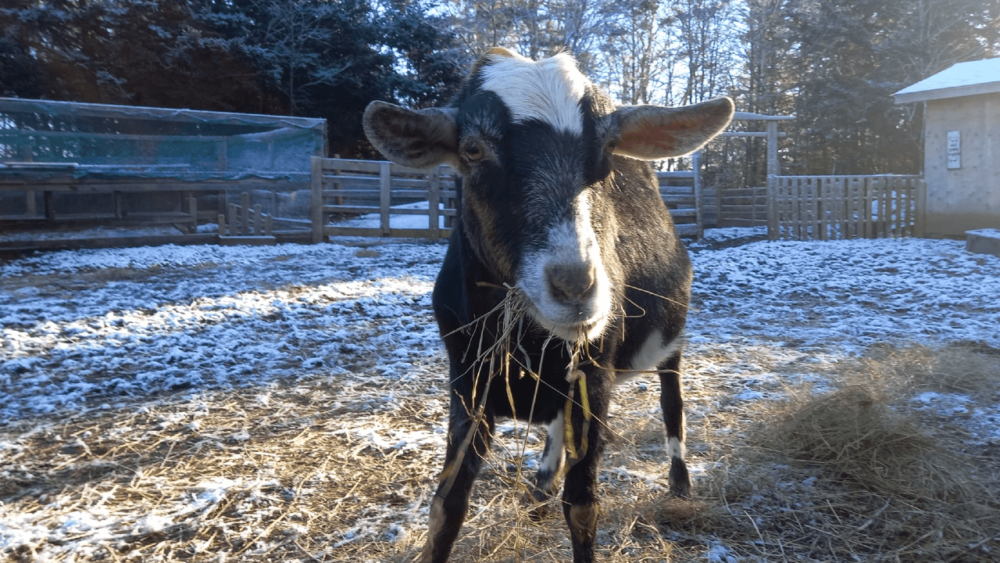
8. Boer: Gentle Giants
Boer goats are super quiet – except for when they want something! Willow, our Boer doe, is perhaps the quietest goat in our herd. But if she’s hungry or separated from the other goats, she certainly lets you know about it.
Boer goats are large, stocky, and strong. Willow is idiosyncratically smaller than most other Boer goats, but she has their sturdy conformation. They’re most often raised for meat. Boer goats are also extremely hardy.
Despite their size, most Boer goats are quite docile. They have a reputation as “gentle giants.” This often makes them desirable for children or companions. Just remember that some bucks can be aggressive!
- Good for meat production (Milk has higher percentage of cream)
- Gentle with children
- Easy to keep
Boer Breed Characteristics
| Origin: | South Africa |
| Conservation Status: | Least concern |
| Size: | Large |
| Height: | 17-25 inches |
| Weight: | 250-350 lbs |
| Care: | Low |
| Lifespan: | 8-12 years |
| Purpose: | Meat, pets, showing |
| Temperament: | Laid-back, docile, gentle |
| Cost: | $400-$500 |
9. Cashmere: Diverse and Valuable
Though there are many Cashmere breeds, they tend to be quiet and calm. Some Cashmere goats are more “feral” and less friendly than others, but most lines are generally quieter than other breeds.
Cashmere goats (also called Kashmir) are mostly prized for their silky coats that produce luxurious cashmere. While white is dominant, Cashmere goats can be found in a diverse and beautiful array of colors, including black, red, cream, grey, and badger.
Did you know that cashmere goats aren’t a breed on their own? Instead, they compose a type of goat that simply produces cashmere. Some of these breeds include Australian Cashmere, Inner Mongolia Cashmere, Hexi, Kashmir Pashmina, Licheng Daqing, and more. Fortunately, as already mentioned, most of these breeds are quite quiet.
Because of this, Cashmere goats aren’t classified in a specific size, either. They can be small, medium, or large.
- Profitable
- Multi-purposed
- High-end fiber
Cashmere Breed Characteristics
| Origin: | Mongolia |
| Conservation Status: | Not protected |
| Size: | Usually small-medium but varies |
| Height: | Any |
| Weight: | 60-80 lbs, varies |
| Care: | High |
| Lifespan: | 10-12 years |
| Purpose: | Fiber, meat |
| Temperament: | Alert, wary, and calm |
| Cost: | $500 |
10. Alpine: Elegant and Charismatic
Alpine goats are renowned for being quieter than some other breeds. They’ll still make a bit of fuss when they need to, but most Alpines aren’t talkative. Alpines often have low-pitched, soft voices.
Alpines are quite clownish, which makes them entertaining for owners and children. They’re extremely intelligent, charming, and sweet. In addition, they have a graceful conformation and produce high-quality milk. In short, Apines are suitable for almost any homestead or farm!
- Does are excellent mothers
- Longevity
- Easy to bond with
Alpine Breed Characteristics
| Origin: | Swiss Alps |
| Conservation Status: | Least concern |
| Size: | Medium-large |
| Height: | 30-32 inches |
| Weight: | 130-170 |
| Care: | Low |
| Lifespan: | 10-18 years |
| Purpose: | Dairy |
| Temperament: | Sweet, curious, friendly |
| Cost: | $200-$800 |

Noisiest Goat Breeds: Don’t Get These Goat Breeds for Suburban Life
There are quiet goat breeds…and then there are particularly loud breeds. Here are three notoriously loud goat breeds.
Nubian: Chatty Cathy
“BAAAAAA!” our Nubian weanling Flash cried nonstop. Our closest neighbor called within minutes. “I thought I heard screaming! Are you okay?”
Nubian goats have a widespread reputation as an extremely noisy, talkative breed. If you have one, you will undoubtedly experience a situation similar to the one outlined above. Some neighbors won’t be as worried as ours was, however.
This breed isn’t ideal for lovers of peace and quiet, but they do have several noteworthy attributes. First, Nubian goats are excellent dairy goats, producing around 8-9 lbs of high-quality milk daily. Nubians are also lovable and beautiful goats with incredibly friendly personalities.
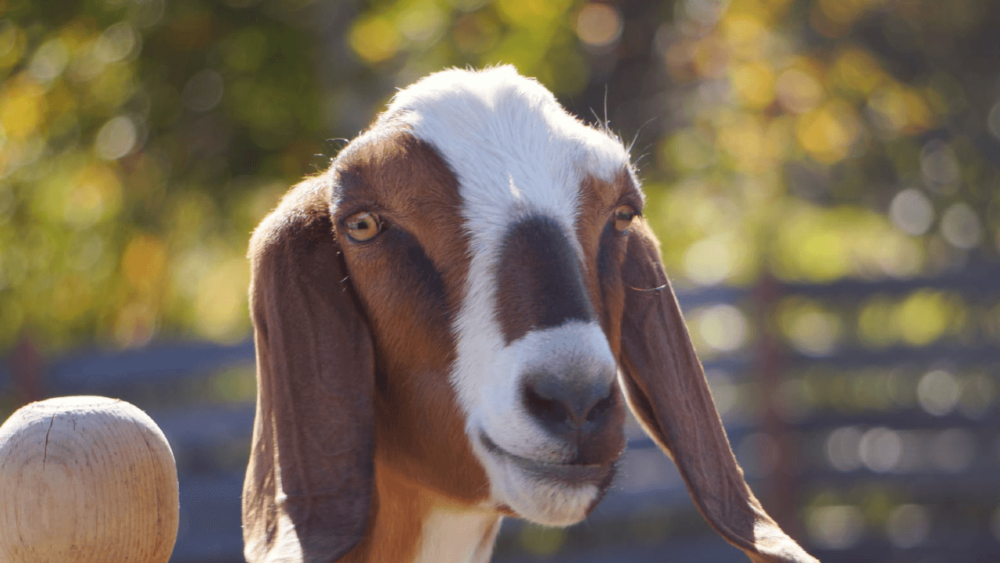
Pygmy: Notorious Fun
Pygmy goats are adored by just about everyone. Even people who dislike goats are won over by this miniature breed. However, Pygmy goats are loud. Although they have soft voices, they’ll typically bleat all day.
Nigerian Dwarf: Kid-Friendly
As amazing as Nigerian Dwarf goats are, they aren’t typically known as a “quiet” breed. They bleat quite loudly whenever they spot you, at feeding time, if the weather isn’t to their fancy, and over almost everything else.
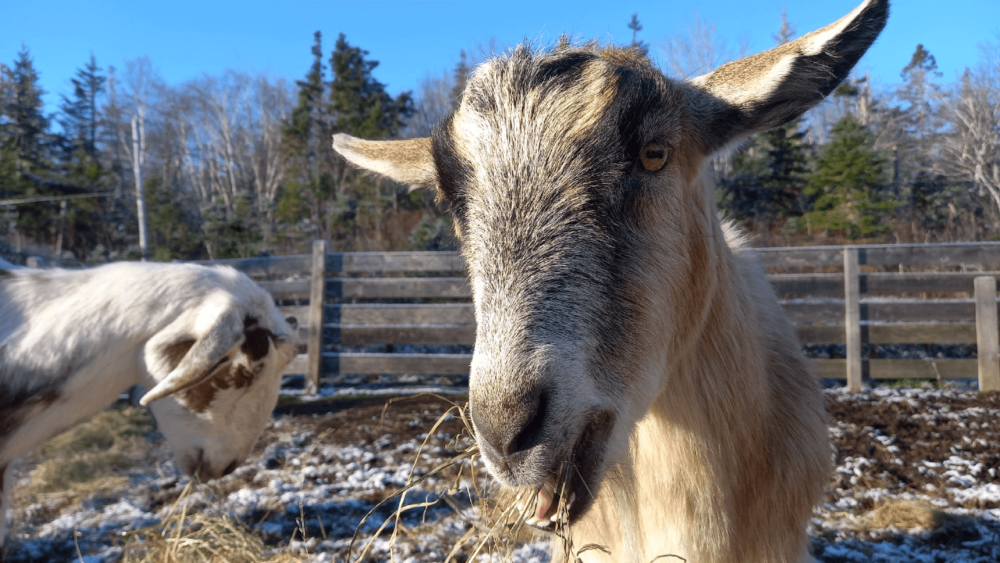
Why Are Goats Noisy?
Pay attention to the sounds your goats make! You should ask yourself a few questions if your goats begin bleating out of the blue:
- When did the goats begin bleating?
- Is it different than normal?
- Has their routine changed recently?
The effort may not seem worth it, but you can prevent and identify many problems by being so attentive.
Communication With Herd
Screaming ensues once you separate a goat from the herd. Mothers and kids, in particular, will bleat when they aren’t together, as well as bonded goats. Goats are the most comfortable in each other’s company. They hate getting separated.
If you have to separate your goat, leave his buddy within sight. You may be able to take goats two at a time, depending on why you’re separating them. This will help prevent and alleviate their separation anxiety.
However, goats quarantined due to a contagious illness must stay isolated to protect the rest of the herd.
On the flipside, some goats are disgruntled when you add another goat to the herd. This disrupts the herd harmony until they all adjust to the newcomer.
Pain or Inflammation
One day I noticed my Nigerian Dwarf goat, Wilson, limping around the field and making pitiful sounds. We checked his hoof, and sure enough, he had a twig caught in there that we easily removed, solving the problem.
Admittedly, Wilson is melodramatic. Nevertheless, your goat might be in serious pain if he’s screaming or even whimpering softly. Check your goat over for signs of pain or inflammation.
Illness
Goats suffering from an illness may be extremely loud. If you suspect this, immediately quarantine the affected goat from the herd and call your veterinarian.
Boredom
Boredom is a goat’s enemy! It’s perhaps one of the most common reasons why goats are so noisy – and more destructive. Goats are extremely inquisitive, playful, and intelligent animals that need to keep their minds and bodies active!
Install some toys and enrichment items throughout your goat’s pen to bounce on and play with. Some old tires, pallets to climb on, exercise balls, and even wooden teeter-totters are all great ideas. Your goats will thank you for it – and so will your ears!
Loneliness
I recently heard about a goat who is kept as a house pet. The owner works outside her home throughout the day. Plus, there are no other companions for this goat to play with. The goat screams all day and destroys furniture in the house as a result of loneliness, anxiety, and boredom.
This is a horrible scenario for any goat, but unfortunately, it happens. Goats are social animals that are meant to live in companionable herds, with space to roam and play. They don’t do well by themselves. Never keep one goat alone! They’re happier and healthier in numbers, so always keep at least two.
Hunger or Thirst
Goats will often let you know when they think it’s feeding time, and they’ll be vocal about it. They thrive on routines and structure, so you can be certain your goats will quickly catch on to your feeding schedule. Baby goats (kids) will also cry when they’re hungry for their mother’s milk (or substitute milk).
They also complain when their water is running low. It’s important to keep your goats adequately hydrated! Check your buckets or trough every few hours, and more frequently in the summer and winter to prevent dehydration.
Breeding Season
During breeding season, both bucks in rut and does in heat may be extremely loud. Bucks often “blubber,” which may strike you as peculiar. This is true of almost every breed.
Breeding season makes goats crazy – sometimes even wethers, too! This is a normal behavior and there usually isn’t anything to worry about.

Tips to Reduce Noisy Goats
Goats are naturally vocal animals. You can’t train them to be quiet. The best thing is to pay attention to your goats and fulfill their needs.
If you aren’t prepared to deal with the noise, you may do better with a quieter animal, such as rabbits or quail.
Keep Your Goats Busy
Goats are intelligent animals that will get into trouble if they aren’t active. Provide toys and other enrichment items in their pasture.
We also cut evergreen tree branches (and occasionally whole evergreen trees) for our goats to keep busy with. Avoid poisonous hemlock and yew. Spruce and fir trees are the best choices for goats.
Should Goats Be Locked Up At Night? Keeping Goats Safe
Don’t Reward Goats for Bleating
If you rush out to meet your goats at the gate with food in hand every time they make a fuss, they’ll learn to keep doing it. Why? Because they’ve learned that they get rewarded with a yummy treat for bleating! In this case, you’ve accidentally conditioned them to continue bleating.
You should check on your goats when they’re bleating, but avoid giving them treats every time.
Keep a Schedule So Your Goats Can Predict What’s Next
Try scheduling both the time you feed your goats and the amount of time you spend with them. Your goats will appreciate a predictable routine. This may not prevent them from bleating for food or attention altogether, but it should be limited to a particular time of day.
Don’t Give Sweet Feed to Your Goats
Goats love the taste of sweet feed. Unfortunately, this results in a sugar crash and…whining for more sweet feed. Avoid feeding your goats a diet high in sugar. You can also try feeding them grain only once a day or cutting out grain completely. Goats should eat primarily hay and grass.
Don’t Bottle-Feed Kids If You Want Quiet Goats
Some goat owners and breeders hypothesize that bottle-fed kids are louder than kids who nurse their dams naturally. Bottle-fed kids imprint on humans rather than other goats, so they become extra needy when they’re older.
This isn’t the case in my herd, but you may find it’s true for your goats. If possible, avoid bottle-feeding your kids.
Are Your Baby Goats Dying? Here’s What To Do
Don’t Keep Bucks
Don’t keep a buck if you don’t need one or your buck might hurt (or accidentally impregnate) other goats. You can castrate your young bucklings instead, or simply purchase wethers and does.
Bucks are often much louder than wethers and does, even if they belong to a quiet breed. And while some bucks are extremely affectionate, many others can pose a safety risk to your other animals.
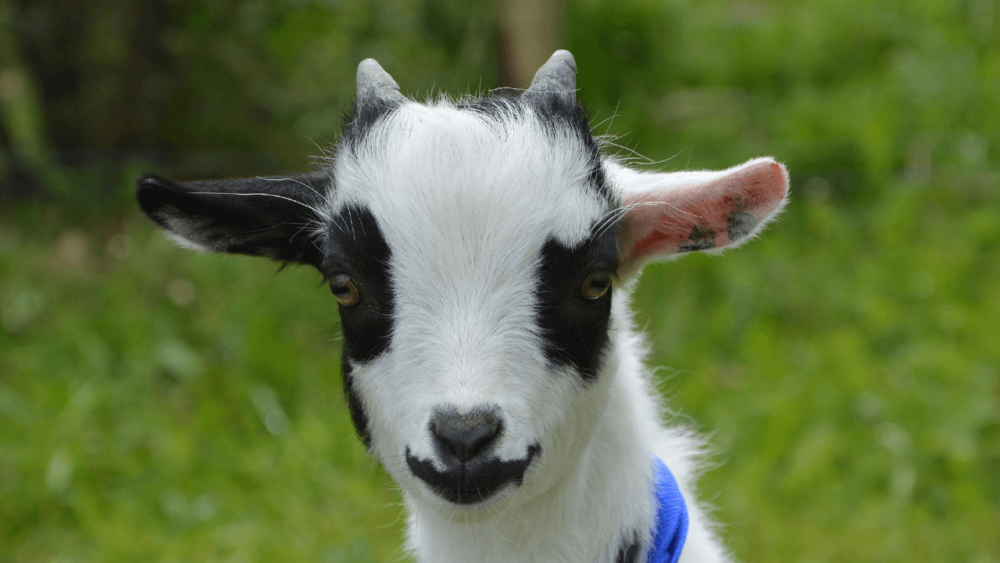
Frequently Asked Questions
What are the friendliest goat breeds? LaMancha, Nubian, Oberhasli, Alpine, and Nigerian Dwarf are among the most friendly goat breeds. Most goats are friendly, however, especially if they’re well-socialized from a young age.
What are the most active goat breeds? Pygmy goats are notorious for their never-ending energy. Moroccan and Boer goats are two of the best domestic goat breeds for climbing!
Are goats good for kids? Children can learn many life lessons from goats! However, there are several safety precautions you should take if you want your children around goats. Individual goats known for headbutting shouldn’t be anywhere near young children. Bucks may also pose a risk to kids, especially when they’re in rut. Lastly, you should teach your kids how to behave around goats in a calm, gentle manner.
Are goats easy to raise? Goats are extremely easy to raise if you have the right conditions. They have great personalities, minimal needs, typically adapt easily, and are generally hardy. Check out this guide on how to raise goats!
Quietest Goat Breeds Ranking Chart
| Top 10 Quietest Goat Breeds | Quiet Rating (1-5) 5 is Quietest | Key Strengths & Uses |
| Oberhasli Goat | ✮✮✮✮✮ | Excellent Milk and Meat goat |
| Angora Goat | ✮✮✮✮✮ | Docile, Fine Fiber Wool |
| Myotonic Goat | ✮✮✮✮✮ | Fun, Fainting Pets |
| Saanen Goat | ✮✮✮✮ | Does are quiet, Milk |
| LaMancha Goat | ✮✮✮✮ | Great with kids, Milk |
| Golden Guernsey Goat | ✮✮✮✮ | Heardy, Easy Milk Goats |
| Toggenburg Goat | ✮✮✮✮ | Milk especially great for cheese |
| Boer Goat | ✮✮✮ | Meat, Gentle with kids |
| Cashmere Goat | ✮✮✮ | Cashmere wool |
| Alpine Goat | ✮✮✮ | Excellent mothers |
| Nubian Goat | ✮ | Excellent milkers |
| Pygmy Goat | ✮ | Minature goat |
| Nigerian Dwarf | ✮ | Excellent pets |
This chart shows the quietest and noisiest goat breeds according to how quiet they are. 5 stars represent the quietest breeds, while one star represents the noisiest goat breeds.

My Essential Goat Supplies
This list contains affiliate products. Affiliate products do not cost more but helps to support BestFarmAnimals and our goal to provide farm animal owners with accurate and helpful information.
This little giant bucket fits on a fence and this one’s easy to carry.
A sturdy dog collar is essential. Don’t do rope (they’ll break and tangle) or chain (injury!).
A Black Water Tub is way nicer than buckets that tip over. I like to get a 20 or 30-gallon in each pen so my goats have plenty of water, but you can get 100-gallons if you have a lot of sheep in one pen.
Loose minerals in a small bag or a Purina 50 lb bag, and a mineral feeder for free-choice is the best option. One side holds minerals, and the other holds baking soda. Don’t feed sheep goat minerals because it usually contains copper- something that is fatal to sheep.
Hoof trimmers are a necessity because you’ll need to trim your sheep’s hooves every few months. These are nice for the price.
Don’t make the mistake I made by waiting to order a drench gun before you need it. I was surprised by how often I use it. It helps with bloating, dehydration, and other ailments. Here’s a good drench, but you can also drench a bloat solution or water if dehydrated.
Digital Thermometor for when your lambs act sick. You’ll need to know if their temps are too low or too high so you can accurately diagnose the issues.
Vetericyn for wound care. It makes a big difference in a speedy recovery.
Check out this list of goat milk supplies you need if you have milk goats.
Conclusion
Goats are vocal animals. You’ll learn to love the sounds they make – it’s often an “acquired taste” for many people. But never ignore the sounds your goats make!

